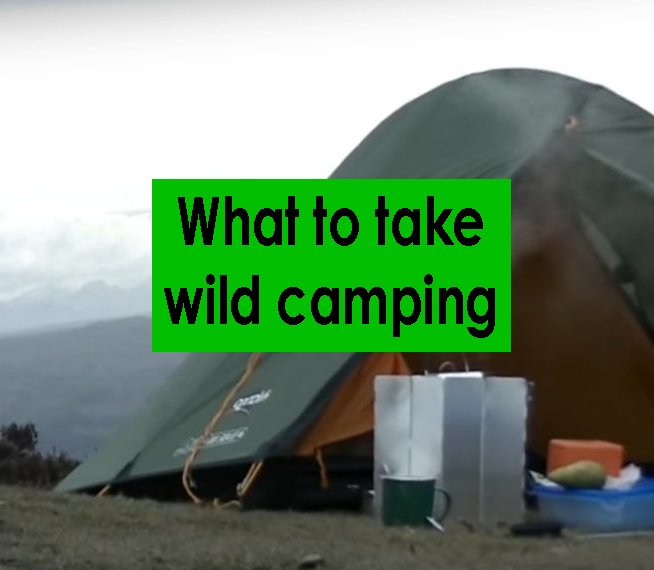- Travel: ideally everything should fit in a single backpack (or fix to it) so that it can be easily carried and kept in one place, you don’t want to get off the train to realise you left your tent behind! And because you are carrying everything you will need to consider the size and weight of everything you put in your backpack. If you are not totally familiar with the area it would be wise to have a detailed map. Let someone know where you are going and when to expect you back. You could also leave this information in a parked car. Note that you may not have good enough signal to navigate by mobile phone.
- Shelter: tent or hammock / bivi bag and tarp.
- Wear: layers of warm clothing with a waterproof outer layer, gloves, hat, sturdy footwear, maybe over-trousers and gaitors. In the UK the temperature is generally going to be lower than in your home and there may be some wind chill.
- Sleep: sleeping bag or wool blanket, sleep mat, dry bag to make pillow, thick socks to wear overnight, maybe a hot water bottle, woolly hat.
- Eat: stove, gas, spare gas, pot / billycan, stove wind shield, water (even if you intend to source some locally), food that will not spoil easily, spork or similar, cup, tea/coffee, salt etc.
- Other: first aid kit, rubbish bag, torch/head torch, spare batteries, length of duct tape, cordage, emergency blanket, whistle, small towel/wipes, toothbrush, insect repellent, maybe a water filter.
Note the preparedness rule ‘3=2=1’ … if you have 3 ways to light the stove and one doesn’t work, you still have 2 and if another method doesn’t work you still have 1 eg. matches, lighter, ferro rod.
The same applies to say light – torch, head torch, keyring torch – all could fail due to battery life.
You don’t need to apply this rule to things that rarely fail or could be repaired in the field eg. footwear – but packing some duct tape and some cordage could save the day if your boot starts to fall apart and they have many other uses too.
Conclusion: Overall you are looking to be self-sufficient and will probably need to modify what you take on a wild camp depending on the time of year and the location eg. warmer sleeping bag in winter months or at high altitude. You should also have knowledge of how to deal with not having toilet facilities when you wild camp ;)

